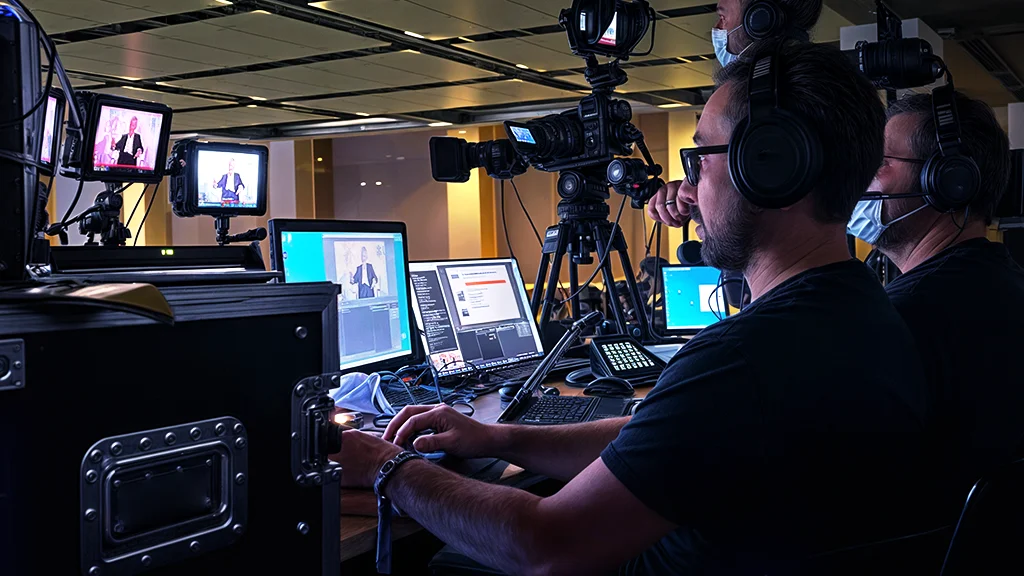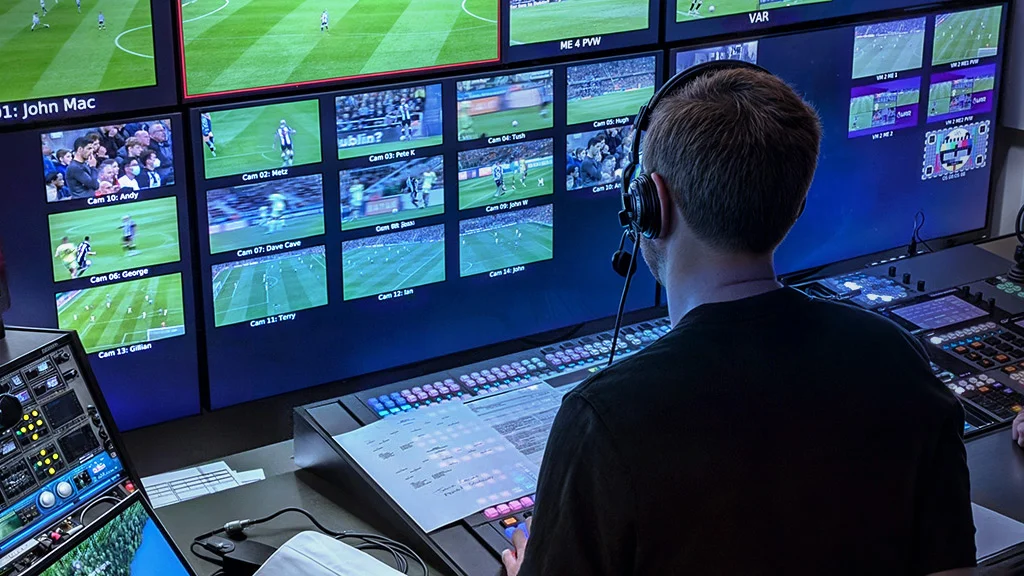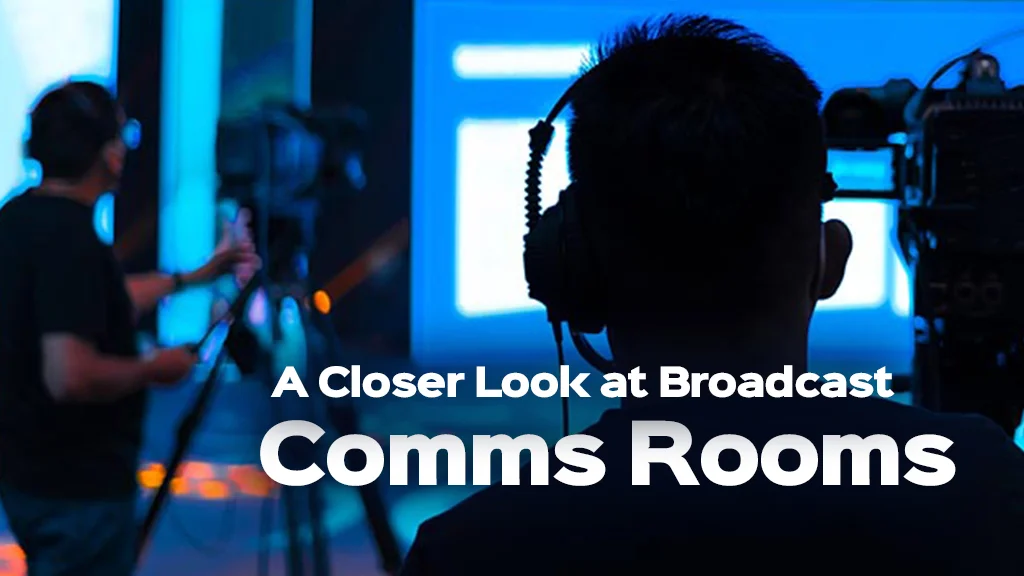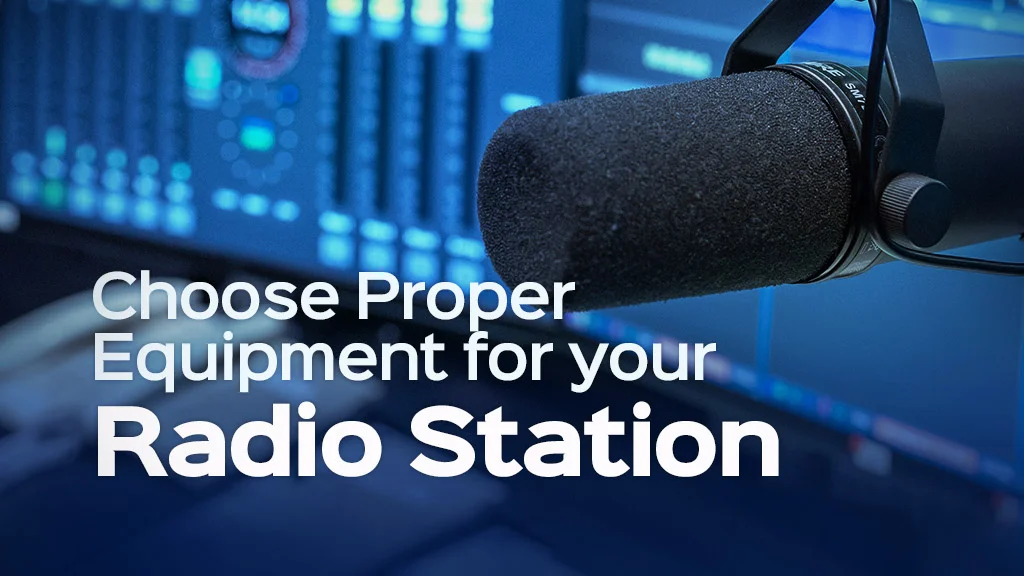
- Article
- Academy
Taking Your Broadcast Outside: Essential Considerations and Pro Tips
Outside broadcasting (OB) encompasses various challenges and opportunities that media professionals face when delivering live content in diverse outdoor environments. This blog explores the essential considerations necessary for successful OB, including signal transport challenges, equipment selection, power supply solutions, management of connectivity, and audio/video quality control.
By examining best practices and offering practical tips, this document seeks to equip broadcasters with the knowledge needed to effectively navigate the complexities of live outdoor productions, ensuring high quality and reliability in any situation.
Tips and challenges in Signal Transport in outside broadcasting
a. Signal Transport Methods
Transporting signals during an outdoor broadcast is with the challenges of outside broadcasting , due to unpredictable environmental factors and logistical constraints. Key methods for signal transport include:
• Fiber Optic Cables: These are the preferred choice for long-distance transmission due to their high bandwidth capabilities and minimal signal loss over extended distances. They are also immune to electromagnetic interference, making them ideal for outdoor settings.
• RF Transmission: Radio frequency delivery is advantageous for rapid setups and flexibility in changing locations Nonetheless, this approach is susceptible to interference from surrounding electronic equipment and physical barriers.
• IP Networks: Utilizing internet protocol (IP) for signal transmission has become increasingly popular, especially with the advent of 5G networks, providing high data rates and the ability to integrate various media types.
b. Challenges
Some prevalent challenges of outside broadcasting associated with signal transport include:
• Environmental Interference: Weather conditions, such as heavy rain or high winds, can significantly impact signal quality and reliability.
• Geographical Barriers: Mountains, buildings, or dense urban environments can block or degrade signals, making it crucial to conduct thorough site surveys before the event.
• Equipment Limitations: Equipment compatibility and limitations, such as cable lengths and connector types, can also pose significant challenges.
c. Strategies
To manage these challenges effectively:
• Conduct pre-event site surveys to assess the environmental landscape and any potential signal-blocking obstacles.
• Implement redundant paths for signal transport to mitigate risks – having backup options can be an essential strategy to ensure continuous broadcasting.
• Utilize advanced signal compression techniques to enhance quality, particularly over wireless networks.
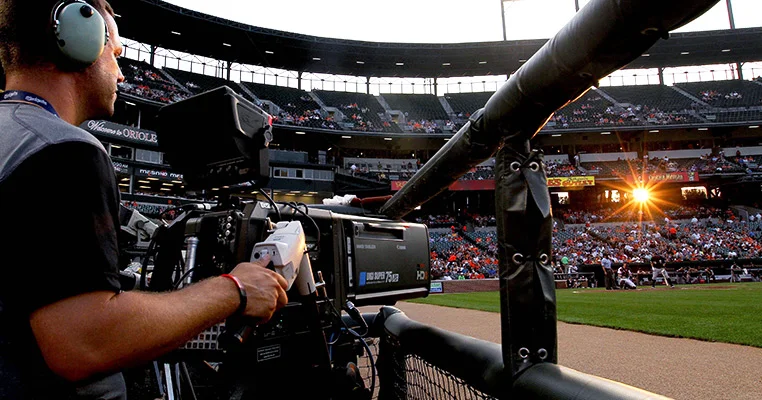
Equipment Selection for Outside Broadcasting
Choosing the right equipment for outside broadcasting is essential to ensure high performance and consistent quality. Key considerations include:
- Cameras
Choose weather-resistant cameras with robust housing to withstand environmental elements. Cameras that support interchanging lenses and varying frame rates enable adaptability to different shooting conditions. - audio and video mixers
Portable mixing consoles should be user-friendly and support multiple inputs/outputs. - Transmission Equipment
Select transmission systems that support multi-format output (e.g., IP, SDI, and HDMI). This adaptability increases flexibility during broadcasts and ensures compatibility with other devices. - Monitoring Equipment and multiviewers
High-quality monitors and multiviewers for real-time feedback ensure that what is being broadcast matches the desired output standards. - Routers
Signal management with routers in outside broadcasting is critical in managing data traffic, distributing video and audio feeds, and ensuring reliable communication between equipment and locations. Given the often complex and dynamic environments of live broadcasts, routers are essential for optimizing signal routing and enabling seamless communication. - Other Essential Gear
Tripods, stabilizers, and drones significantly enhance production value by providing versatile shooting angles and improved stability. These tools allow filmmakers and broadcasters to capture dynamic shots, ensuring smooth and professional-looking footage that engages the audience effectively.
Power Supply and Backup Solutions for OB Vans
A Reliable power supply is crucial for ensuring uninterrupted broadcasting, particularly in outdoor settings where conditions can be unpredictable. It is essential to have well-planned power solutions and robust backup systems to address potential power failures in outside broadcast facilities. Here are key considerations and solutions:
- Primary Power Supply
Utility Power: Ensure that your OB van is connected to a reliable municipal power source. Consider the total power requirements of the OB setup to ensure that the connection can handle the load without the risk of tripping circuits.
Power Distribution Units (PDUs): Employ PDUs to efficiently distribute power to various equipment in the OB van. This includes ensuring enough outlets and sufficient capacity to handle potential power surges during broadcasts. PDUs must also include surge protection to ensure the safety of sensitive electronic devices.
- Backup Solutions
Uninterruptible Power Supply (UPS): Install a UPS system that can provide immediate backup power in case of electrical failure. This enables smooth switching between the primary power source and the UPS, reducing the risk of downtime. The UPS should be appropriately sized to support critical systems long enough for safe shutdowns or switching to alternate power sources.
Battery Backup Systems: Utilize portable, high-capacity battery systems designed to power essential equipment during outages. These batteries should be easily transportable and capable of being charged rapidly to ensure they are available when needed.
- Redundancy Planning
Dual Power Source Configuration: Implement a dual power source configuration specifically for technical equipment like mixers, routers, multiviewers, and other vital systems. This may involve using both the primary utility power, along with battery-powered backup units or secondary power supplies.
Automatic Transfer Switches (ATS): Incorporate ATS technology to facilitate rapid switching between power sources without interruption. This system can automatically detect power loss and switch to backup power systems, ensuring that the critical operations of the outside broadcast facilities remain seamless and uninterrupted.
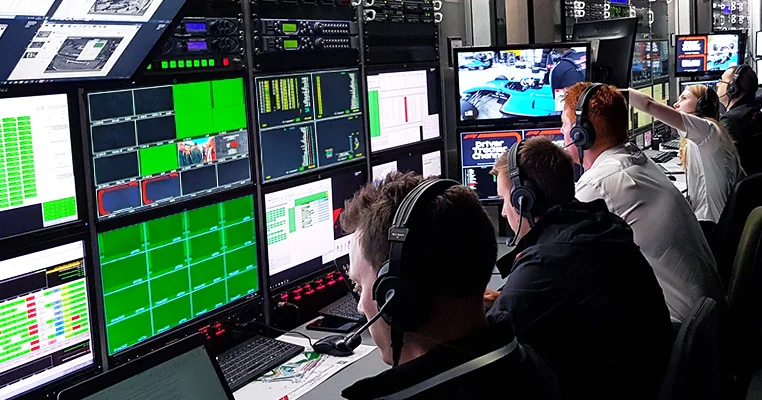
Managing Connectivity Challenges
Connectivity is often a significant challenge in outdoor broadcasting. Effective strategies include:
Satellite Connections: Reliable for remote locations but may have latency issues.
IP over Fiber: Provides high bandwidth and low latency but requires extensive infrastructure.
5G Networks: Emerging technology that offers high-speed connectivity but depends on coverage and stability.
To effectively manage these challenges, it is advisable to have multiple connectivity options and contingency plans for failure scenarios.
Pre-Broadcast Testing and On-Site Monitoring
Thorough pre-broadcast testing is essential to detect potential issues before going live. Important steps involve:
- Equipment Checks
Conduct comprehensive testing of all equipment, including cameras, microphones, and transmission systems. Ensure all settings are optimized and the equipment is in proper working order. - Signal Path Testing
Verify the signal path from source to destination. This includes assessing the entire chain, and checking for bottlenecks or points of failure in the transmission line. - Rehearsals
Conduct full rehearsals, simulating the live event environment to identify potential pitfalls or technical disruptions. Rehearsals can bring to light issues that may not be visible in isolated testing. - On-Site Monitoring Systems
Equip the team with monitoring systems to help keep track of video, audio, and signal quality throughout the broadcast. This allows for immediate response to any technical issues.
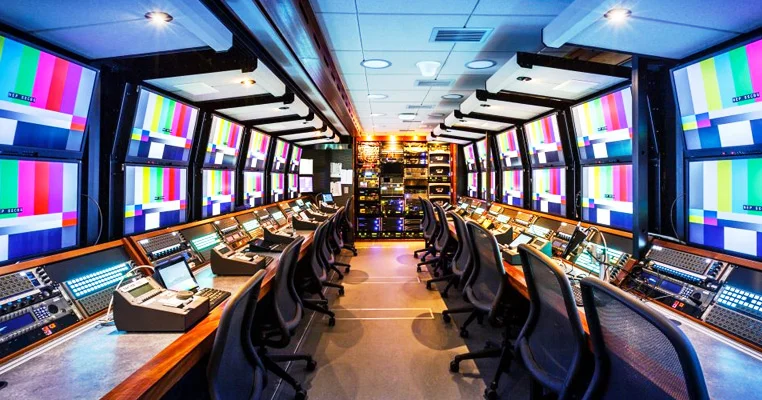
Audio and Video Quality Control
Maintaining superior audio and visual quality is critical for engaging viewers. Best practices for audio and video quality control include:
- On-Site Monitoring
Utilize portable audio meters and video monitors to ensure the output signal matches the expected quality. This allows for real-time adjustments on-site. - Signal Integrity Checks
Regularly verify audio and video levels during a broadcast to ensure that they are within the acceptable range. Transmitters should be routinely checked to avoid degradation due to environmental factors. - Equipment Calibration
Periodically calibrate all audio and video equipment before the broadcast starts and during breaks to ensure accurate performance.
Other challenges and solutions in outside broadcasting
In addition to the challenges above, OB faces several unique issues, including:
- Audio-video delay
Audio video delay , often referred to as “lip sync” delay, is a common issue in outside broadcasting where there’s a discrepancy between the audio and video signals. This delay can be especially noticeable in live broadcasts, such as sports events or performances, where real-time synchronization is crucial for audience perception.
Solution: To address this issue, it is essential to utilize equipment such as audio and video delay compensators. These devices can help synchronize the audio and video feeds by adjusting the timing, ensuring that both signals are aligned, and creating a seamless viewing experience for the audience. Regular monitoring and calibration of the broadcast setup can also help maintain synchronization throughout the event, minimizing any potential disruptions.
- Inappropriate Equipment Selection
Choosing the right equipment is crucial for a successful outside broadcast. Using unsuitable gear can lead to technical failures, poor audio and video quality, or equipment malfunctions. This problem is often exacerbated in unpredictable environments where conditions can change rapidly.
Solution: Samim Group offers a range of specialized, high-quality equipment tailored for outside broadcasting. By utilizing our products, you can ensure:
Compatibility in Diverse Conditions: Samim products are built to perform in various environments, ensuring reliable operation even in challenging weather or unpredictable settings.
Easy Setup and Operation: Our outside broadcast equipment features user-friendly designs, allowing for quick and efficient setup to minimize downtime during broadcasts.
By choosing the right tools from Samim Group, you can enhance your broadcast quality and reduce the risk of technical issues, ensuring a smooth and successful outdoor event.
- Logistics
Managing on-site logistics such as transportation, setup, and teardown can be complex, particularly in remote or crowded areas.
Solution: Effective planning, scheduling, and coordination among team members are critical to avoid confusion during live situations. - Security
Ensuring the safety of the equipment and crew in public locations is essential.
Solution: Consider hiring security personnel and implementing access controls to manage who can enter the OB area.


